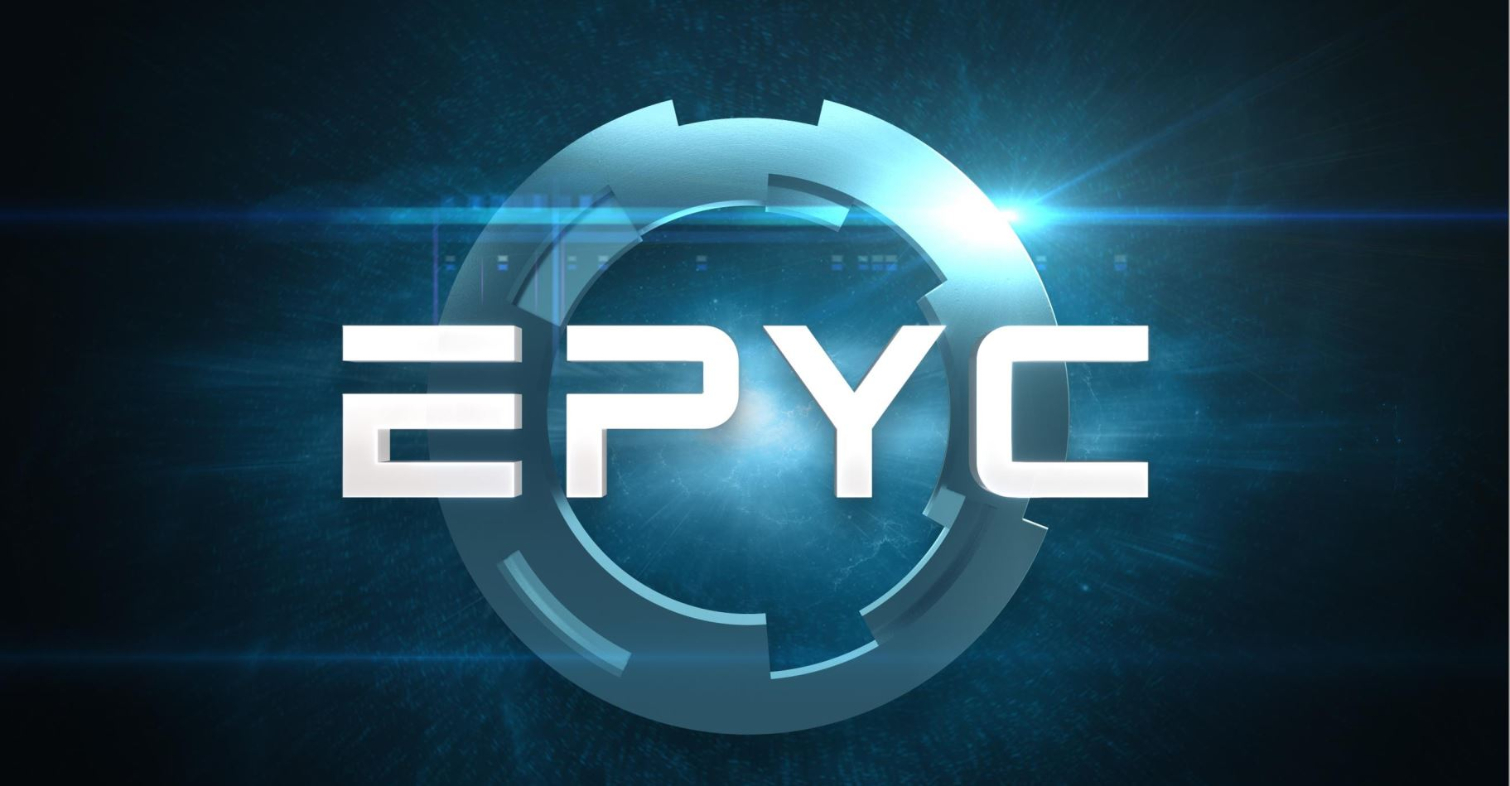64-Core AMD EPYC Rome Achieves World's First Real-Time 8K HEVC Encoding
On Friday, Beamr Imaging claims to have achieved the world's first real-time 8K HEVC encoding by using a single EPYC 7742, AMD's flagship server CPU based on its new Rome architecture.
A single 64-core EPYC 7742, which features the 7nm process and the Zen 2 microarchitecture (the same type of cores found in Ryzen 3000), encoded 8K footage in real time at 79 frames per second with 10-bit color required for HDR.
It's a significant achievement for both hardware and software; the Epyc 7742 is the world's first 64-core x86 CPU to come in a standard general-purpose socket, and the Beamr encoding software is designed to use all 64 of those cores. Parallelization is a significant concern for CPUs with increasingly larger core counts, from consumer to server applications, so it's nice to see the 7742 used to the fullest.
The demand for encoding 8K footage in real time at a good quality level has increased as 8K displays have begun filtering out to market. They're not very common today, but they will likely become more common over time just as 4K monitors, and especially TVs, have. Soon we may see live television in 8K, which is the angle AMD and Beamr are taking with the 7742's encoding and streaming capabilities, specifically in regards to the 2020 Tokyo Olympics.
AMD says EPYC could be used for more than just television, though. The chips are also suitable for "premium video on demand" (presumably for services like Netflix and Hulu) as well as "cloud gaming content streaming," which has emerged as a way to play games with services like GeForce Now and Google Stadia. That said, AMD also states that the previous-gen Naples-based EPYC processors are enough for these applications, too, but at sub-8K resolutions.
There are still other challenges that need to be solved before 8K becomes mainstream, like sufficient internet bandwidth and a wider selection of 8K displays. But AMD's EPYC Rome seems to solve the issue of delivering an acceptable amount of horsepower within a much denser footprint, which should provide a decent incentive for ISPs and display manufacturers to offer faster internet connections (hopefully) and more 8K display options, respectively.
Get Tom's Hardware's best news and in-depth reviews, straight to your inbox.

Matthew Connatser is a freelancing writer for Tom's Hardware US. He writes articles about CPUs, GPUs, SSDs, and computers in general.
-
bit_user You're just talking about CPU-based encoding, right? I have some difficulty believing no ASIC or GPU has previously managed this feat.Reply
Nvidia GPUs support HEVC/H.265 encoding 10-bit at up to 8k x 8k (whereas normal 8k is approximately 8k x 4k):
https://developer.nvidia.com/nvidia-video-codec-sdk
However, they don't say at what framerate it can manage this. -
thGe17 What's all the fuss about? And how and why is "real-time" related to AMD?Reply
8K HEVC HDR 10 Bit with 79 fps also means , that every single socket Xeon Platinum (28 C, maybe even 26 and 24 C) is able to render in real-time, because 79 fps is more than twice (or even triple) the number of necessary frames per second. The 7742 delivers more absolute Fps, naturally, because it delivers more than twice the number of CPU cores per socket compared to Intels regular setup.
Looks like (or at least feels to be) an AMD sponsored news.
A better title would be something like "Beamr Imaging demonstrates incredibly fast 79 fps CPU-based 8K HEVC encoding" or something similar.
(Or did I missed something and 60 Hz (full frames) is now the new default for television and film?) -
sonichedgehog360 Software-based encoding is far superior which applies especially in the industry where live mastering with compression (even in broadcast--and I am not speaking of YouTube media influencers and game streamers who could care less) requires unyielding fidelity, not raw speed and passable quality. In this regard, Intel Quick Sync and Nvidia's NVENC are both non-starters since they exhibit clear signs of pixelization, noise, and smearing compared to the software solutions at comparable bitrates and quality levels.Reply -
kinggremlin Reply
Agreed. 79fps is a mighty impressive accomplishment. However, with film typically 24fps and broadcast tv topping out at 29.97 fps, in the US, the claim of first real time encoding seems a bit dubious. There are multiple Intel and probably previous gen AMD CPU's that can exceed 30 fps.thGe17 said:What's all the fuss about? And how and why is "real-time" related to AMD?
8K HEVC HDR 10 Bit with 79 fps also means , that every single socket Xeon Platinum (28 C, maybe even 26 and 24 C) is able to render in real-time, because 79 fps is more than twice (or even triple) the number of necessary frames per second. The 7742 delivers more absolute Fps, naturally, because it delivers more than twice the number of CPU cores per socket compared to Intels regular setup.
Looks like (or at least feels to be) an AMD sponsored news.
A better title would be something like "Beamr Imaging demonstrates incredibly fast 79 fps CPU-based 8K HEVC encoding" or something similar.
(Or did I missed something and 60 Hz (full frames) is now the new default for television and film?) -
sunk818 Replykinggremlin said:Agreed. 79fps is a mighty impressive accomplishment. However, with film typically 24fps and broadcast tv topping out at 29.97 fps, in the US, the claim of first real time encoding seems a bit dubious. There are multiple Intel and probably previous gen AMD CPU's that can exceed 30 fps.
Sports like mixed martial arts (MMA), boxing, racing, etc that sees a lot of changes between frames benefit from higher fps. Sky Sports is showing many events at 60 FPS, so having a server being able to render in real-time is useful. If you render at 24fps or 30fps, then you can potentially provide 2-3 real-time streams using one server.
Besides video rendering, this is also a boon to server licensing costs. Some licenses charge per server, so having one server instead of 2-3 do the same job saves money on licensing fees. If you colocate, you just pay for less space on the rack and potentially less electricity use if you compare performance with Xeon Gold. -
B-Bob ReplythGe17 said:What's all the fuss about? And how and why is "real-time" related to AMD?
8K HEVC HDR 10 Bit with 79 fps also means , that every single socket Xeon Platinum (28 C, maybe even 26 and 24 C) is able to render in real-time, because 79 fps is more than twice (or even triple) the number of necessary frames per second. The 7742 delivers more absolute Fps, naturally, because it delivers more than twice the number of CPU cores per socket compared to Intels regular setup.
Looks like (or at least feels to be) an AMD sponsored news.
A better title would be something like "Beamr Imaging demonstrates incredibly fast 79 fps CPU-based 8K HEVC encoding" or something similar.
(Or did I missed something and 60 Hz (full frames) is now the new default for television and film?)
60p is appears to be a reasonable minimum for 8K. As the resolution grows, low framerates become more noticeable to eye. They broadcast 8K in Japan at 60p.
That said, I would be very cautious about the news. Is 79 fps the average speed achieved? For what content? Can they encode any content, like white noise, above 60p? I bet they can't. They have just run their software on a that CPU with a test clip and spread the news as a mean of company promotion. -
Alex/AT Reply
GPU could, but the quality of GPU optimized encoders nowadays is totally bad. Just because some things cannot be optimized easily and were simplified / thrown out.bit_user said:You're just talking about CPU-based encoding, right? I have some difficulty believing no ASIC or GPU has previously managed this feat.
Using specialized ASICs OTOH can totally be feasible in terms of quality, but will cost few times more per platform, and will require to be replaced once codecs change or evolve. -
kinggremlin Replysunk818 said:Sports like mixed martial arts (MMA), boxing, racing, etc that sees a lot of changes between frames benefit from higher fps. Sky Sports is showing many events at 60 FPS, so having a server being able to render in real-time is useful. If you render at 24fps or 30fps, then you can potentially provide 2-3 real-time streams using one server.
Besides video rendering, this is also a boon to server licensing costs. Some licenses charge per server, so having one server instead of 2-3 do the same job saves money on licensing fees. If you colocate, you just pay for less space on the rack and potentially less electricity use if you compare performance with Xeon Gold.
Sky Sports broadcasts at 50fps, not 60fps. UHD currently uses about 15mbps to 25mbps. Fast motion 60fps 8k is estimated to need 80 to 100mbps per stream. TV providers are no where near being able to provide that type of bandwidth. We are years away from 8k 60 fps being a practical medium. -
bit_user Reply
That's what they demo'd it on.thGe17 said:And how and why is "real-time" related to AMD?
In a way, it is. There's a source link, at the top, which shows it's from the PR/Newswire. So, AMD and Beamr partnered on this project and issued a press release that (somewhat bizarrely) was first reported on Yahoo Finance and that was picked up by the author of this piece. I wonder why not source it straight from the newswire...thGe17 said:Looks like (or at least feels to be) an AMD sponsored news.
AFAIK, there are yet to be any 8k TV & film standards. Maybe some digital cinema projectors are already using 8k, but I assume most of that stuff is vendor-specific.thGe17 said:(Or did I missed something and 60 Hz (full frames) is now the new default for television and film?)
Anyway, 8k is so over-the-top for TV that why not also go for 60 Hz? Most TVs are using motion smoothing, and that stuff works even better (fewer artifacts) with higher-rate source material.
